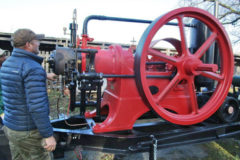Kiel Canal classic from the 1970s
Posted by Chris Graham on 29th September 2022
Here’s a selection of photographs taken by the late Gordon Turner, of classic cargo ships in the, described by Jim Shaw.
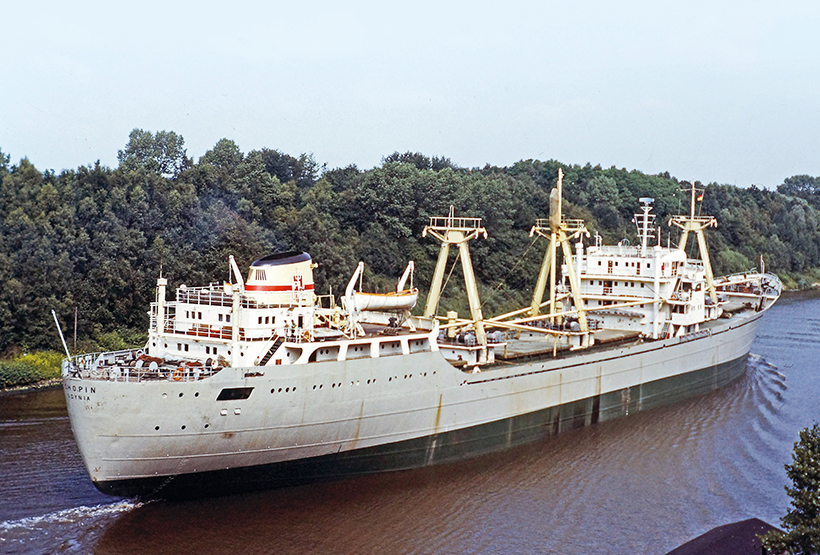
Kiel Canal: Carrying the profile of a tanker, the 10,898dwt cargo ship Chopin was built in 1959 by Yugoslavia’s Brodogradiliste ‘Split’ shipyard for Polish Ocean Lines and served until 1978, when she was moved into the Chinese-Polish Joint Stock Shipping Company Chipolbrok fleet as Wu Xing, later becoming Cheng Shan. Powered by a main engine of 4,410kW, output to give a speed of 15 knots, the 153.1m by 18.8m vessel was deleted from Chinese records prior to 2010.
The 61-mile-long Kiel Canal, which provides a shortcut between the North Sea at Brunsbüttel and the Baltic Sea at Kiel-Holtenau, has become a favourite for ship photographers because of the many vantage points it offers for taking close-up views of passing vessels.
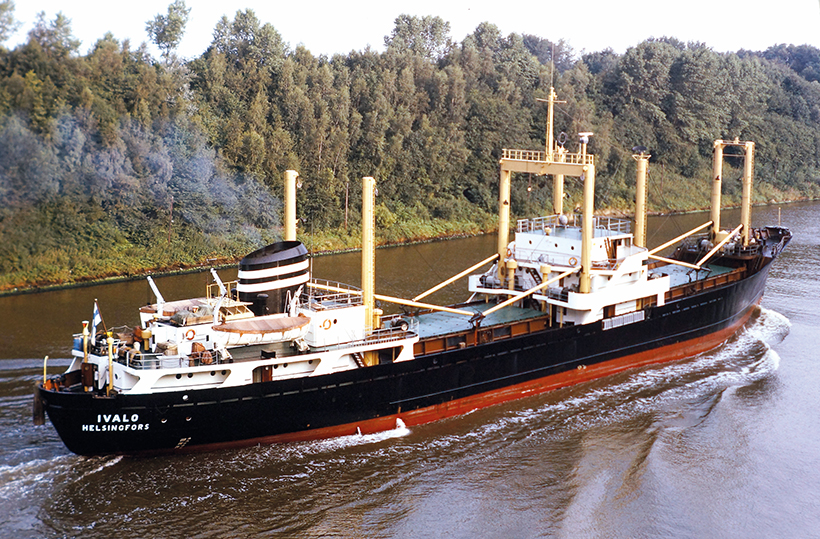
Completed by the Valmet Oy Pansion Shipyard at Turku, Finland, for the Finland Steamship Company in 1958, the 1,362gt Ivalo was sold to Yugoslavian interests as Rad in 1975 and was reported to have been demolished in that country a decade later.
Completed in 1895, after the Suez Canal but before the Panama Canal, the ‘Nord-Ostsee-Kanal’ has been widened and deepened several times over the years and is currently being expanded by Belgium’s DEME under a contract to be completed in 2023. Currently, the maximum length for ships using the canal is 235.5m (772.6ft) with a maximum beam of 32.5m (106.6ft) and a draught of up to 7m (22.97ft), but vessels shorter than 160m (524.93ft) can have a slightly deeper draught of 9.5m (31.2ft).
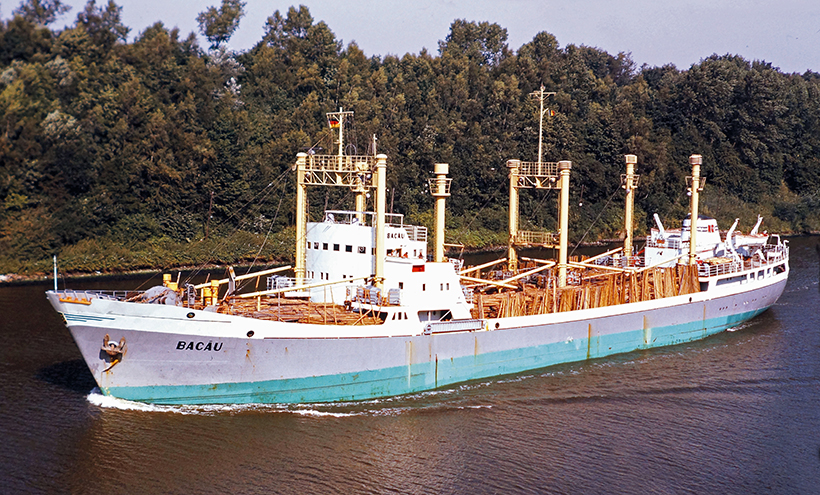
Passing through the canal with a cargo of timber in the 1970s, the 100.6m by 13.9m Bacau was completed by Romania’s Galati Shipyard for the state-owned ‘Navrom’ shipping company in 1964 and, like many other Romanian ships, was sold following the Romanian Revolution of 1989. She later traded under the names Marwan 3, Hangamah and Universe until being broken up at India’s Gadani Beach in late 1995.
The largest cargo ship to use the canal, by virtue of its length, beam and draught, was the 74,001dwt bulk carrier Ever Leader, which measured 225m by 32.26m on a loaded draught of 7.30m, when it transited in 2009. However, its length has been exceeded by the 229m bulker Aeolian Vision, which transited in 2012. Although the canal has been handling approximately 80 to 120 ships per day, and over 30,000 a year, these numbers dropped during the Covid-19 pandemic, which constrained the world’s economy, but as the recovery starts the canal is getting busier.
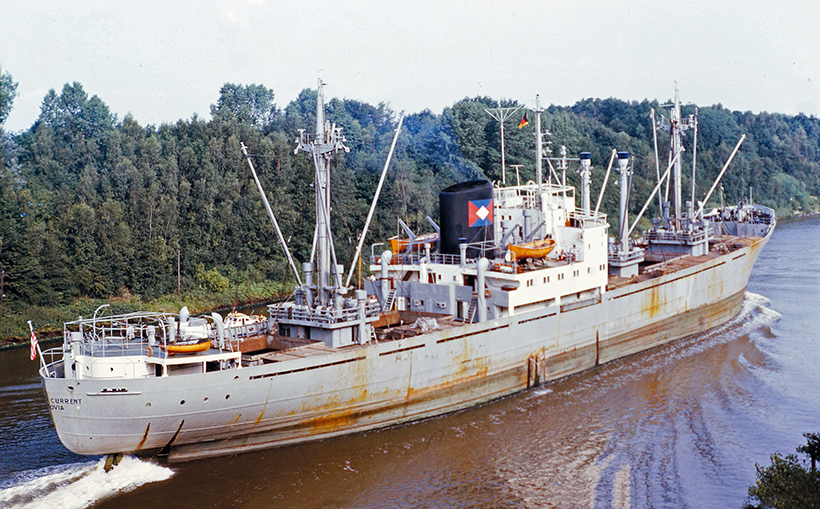
Passing through the canal at a good clip in August 1973, the 8,640dwt Benguela Current was lost on her next voyage to West Africa when fire swept through the vessel when she was off Mauritania on 21 October, homeward bound with a cargo of logs. Built by Deutsche Werft, Hamburg, in 1954 as Balkan for Ernst Komrowski & Co, the 125.47m by 17.27m cargo liner was considered economically unrepairable after the fire and was broken up at Bremen in 1974.
Gordon Turner
Gordon Turner, a well-known ship historian and author of Empress of Britain: Canadian Pacific’s Greatest Ship, died earlier this year in his home town of Toronto, Canada, just shy of his 90th birthday. Born in Scotland, and a longtime member of the Toronto Marine Historical Society, Gordon was an elementary school teacher by profession, but also an avid ship photographer, and travelled to Europe several times to photograph ships on the Norwegian coast and along the Kiel Canal. The latter location was his favourite and a sample of Gordon’s photographs taken along the waterway in the early 1970s is presented here.
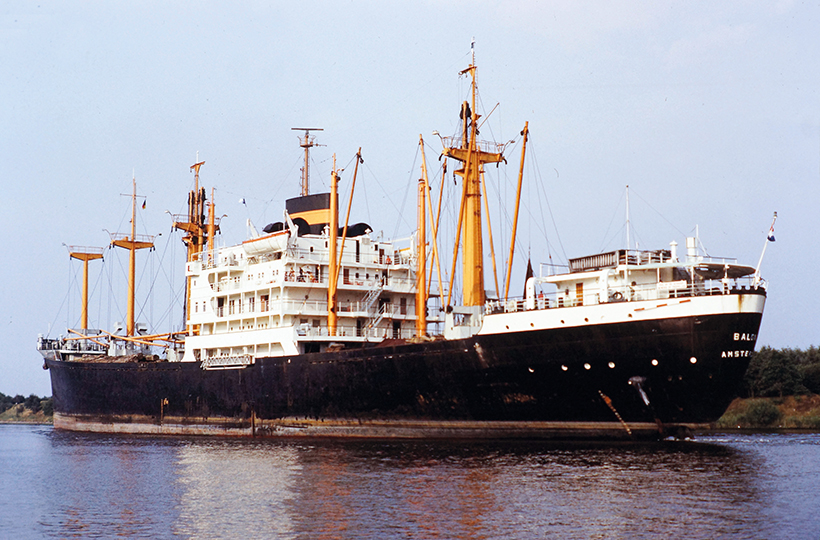
A well-proportioned Dutch ‘tweendecker’, the 8,789gt Balong was completed in 1956 by Machinefabriek en Scheepswerf van P. Smit Jr as Batang for NV Stoomvaart Maatschappij ‘Nederland’…
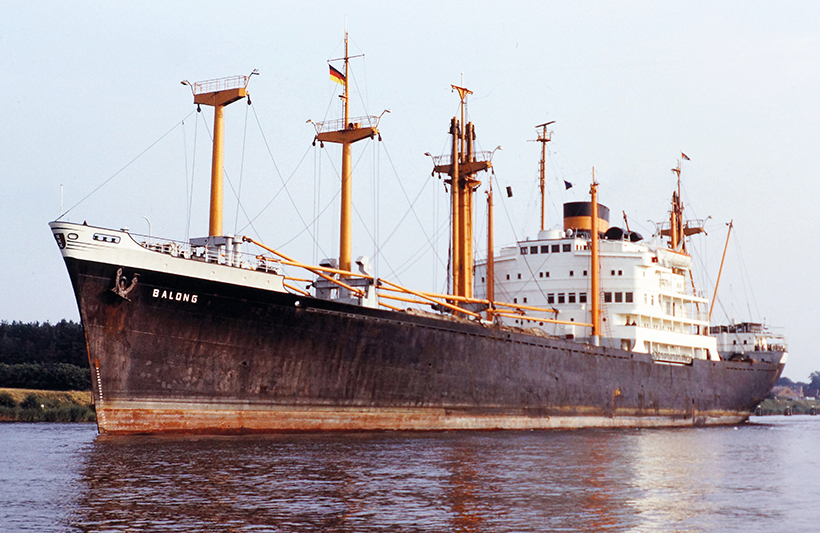
… but was renamed Balong a year later. Propelled by a seven-cylinder two-stroke single-acting engine of 8,200hp, the 16-knot vessel was sold to Jutha Maritime Company of Bangkok, Thailand in 1977 and renamed Jutha Dhipya. Three years later, the 145.3m by 20m ship was broken up for scrap at Kaohsiung, Taiwan by Nan Hor Steel Enterprise Co Ltd

Sailing under the ownership of Cyprus-based Lybero Maritime Company in 1973, the 2,317gt Castrenza was completed by William Gray & Co, West Hartlepool in 1949 as Cristallina for the Swiss Shipping Company and made use of a Swiss-built five-cylinder Sulzer engine for a speed of 12 knots. Sold and renamed in 1968, the 99m by 14m ship passed through several owners and was given various names before being broken up at Karachi, Pakistan by Jamal Younis & Co as Sea Beauty in 1981.
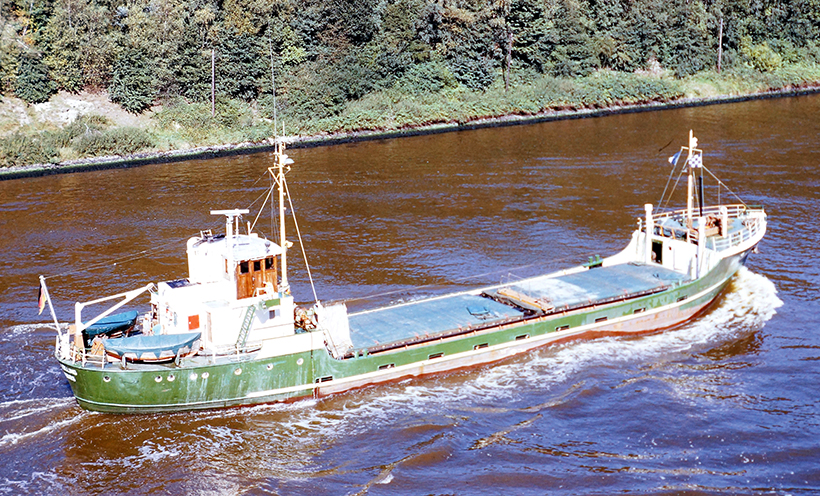
A little ship from the 1950s still afloat was the 348gt German coaster Rita Dolling, built by Rickmers Werft, Bremerhaven in 1950 as Hermann Hans, but renamed Rita Dolling in 1965 when she was sold to Hamburg’s Henry Dolling. Two decades later, a navigation school at Grünendeich, Germany purchased the 47m by 7m vessel for stationary training use under the name Greundiek. When the school closed in 1994, a local preservation group, Alter Hafen eV, acquired the vessel and restored her to a seagoing condition based at Stade.
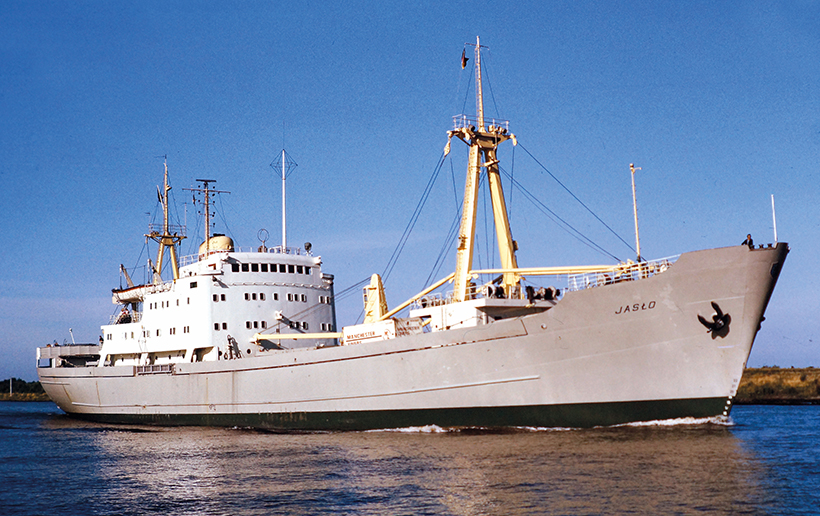
One of Polish Ocean Lines’ smaller freighters, the 2,309gt Jasło was completed by Denmark’s Aalborg Vaerft A/S in 1967 and operated regularly through the canal until 1987, when she was sold to Middle East interests. Thereafter, the refrigerated ship traded as Al Marwa, Noor and Zubara until 1998, when she suffered an extensive fire and sank off Port Kuwait in the Persian Gulf.
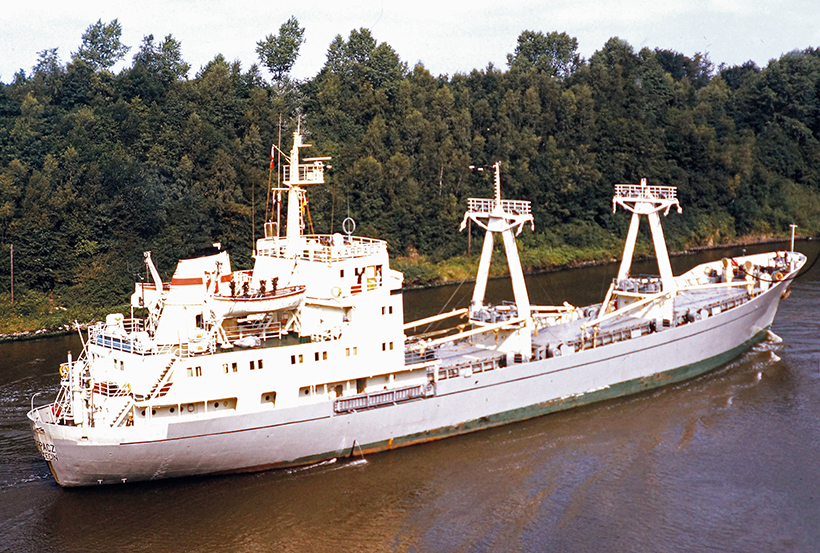
A regular user of the canal for many years, the 85.9m by 12.4m general cargo carrier Karpacz was completed by Romania’s Severnav shipyard in 1971 for Polish Ocean Lines but had its aftmost mast and derricks removed to facilitate container handling prior to being sold out of the fleet in 1986. After going through a number of later owners and various names, the 1,754gt ship was broken up at Aliaga, Turkey in 2002.
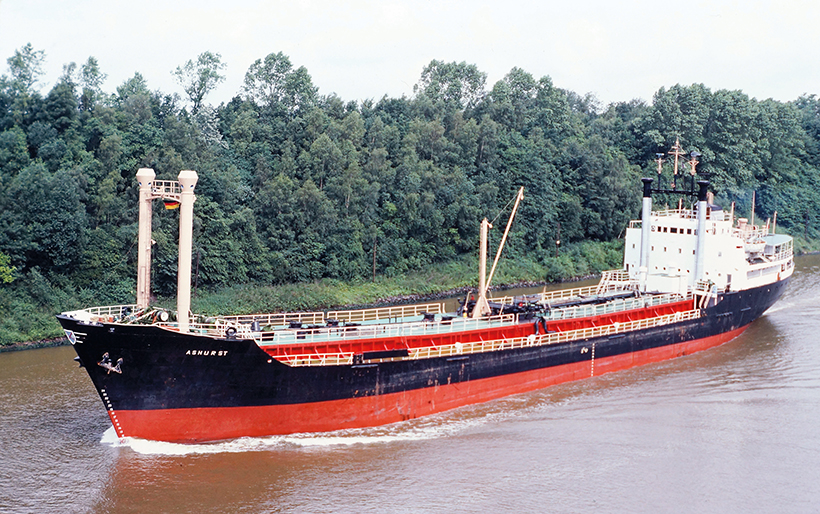
The 5,503dwt Ashurst was built in Spain as the dry cargo carrier Finse for Norway’s J.M. Johannessens Rederi but was converted into a product tanker in 1971 when purchased by Stephenson Clarke. After over a decade of carrying cargo to the Thames, the 12.5-knot vessel was sold to Nigerian interests as Nadia and later traded under the names Shirley and Asma before being broken up at Pakistan’s Gadani Beach in 2002.
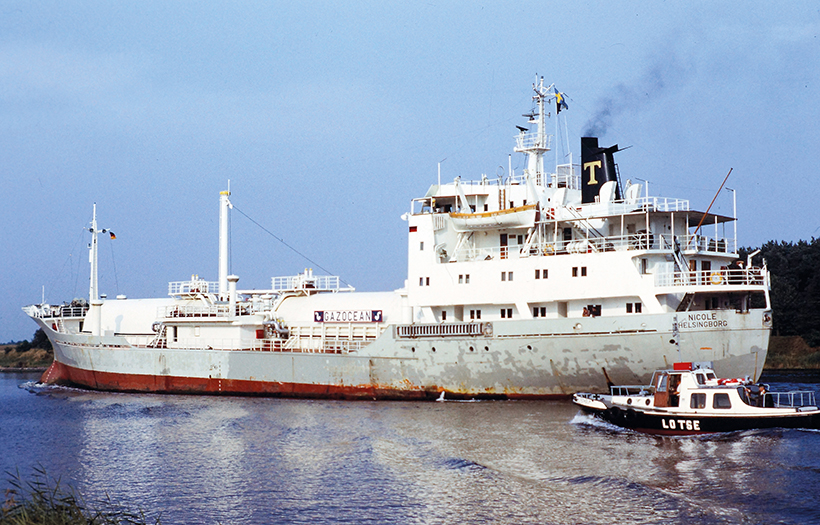
The gas tanker Nicole was built in 1967 by Germany’s Jos L. Meyer Werft for Sweden’s Rederi Ab Transmarin and was the last Swedish-flagged ship in that fleet when she was sold to Britain’s Gladstone Co Ltd in 1977. Thereafter, the 2,592gt vessel was sold to South Korean interests and traded under several names until she was involved in a collision while operating as Ganar Shipping’s Ganar Gas in 1994, after which she was deleted from the South Korean register.

One of a series of three B433 type refrigerated fish carriers completed for the Polish fishing industry in the early 1970s, the 5,126gt Halniak was built by the Gdansk Shipyard for the joint stock company Dalmor, but was later transferred to Poland’s Transocean group, in whose colours she is seen here. Employed to transport supplies and crews to Polish fishing vessels at sea before returning to port with caught fish, the 119m by 17m ship was broken up by India’s Jai Bharat Steel Company at Alang in 1994.
This feature comes from the latest issue of Ships Monthly, and you can get a money-saving subscription to this magazine simply by clicking HERE




